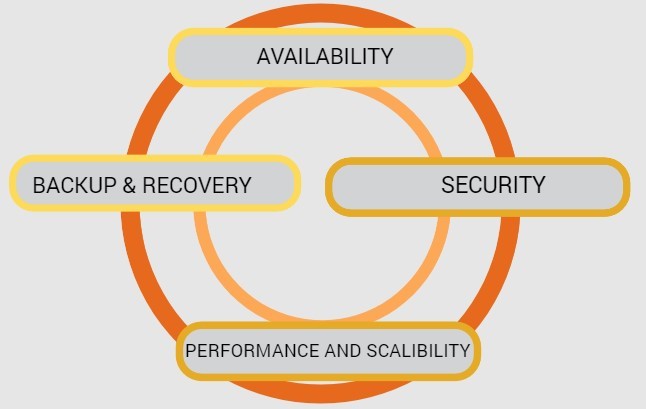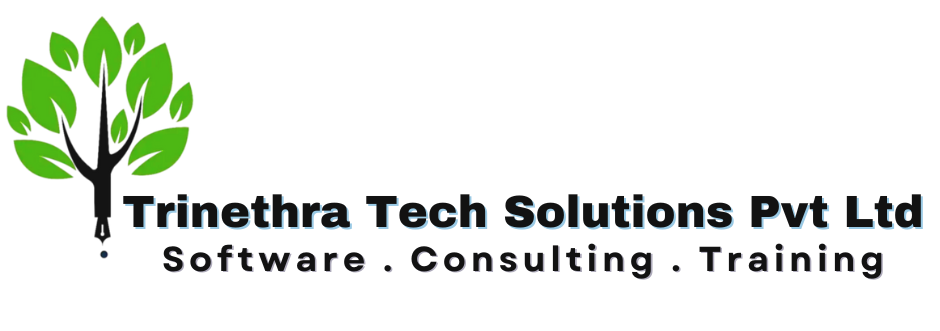Oracle
CONTENT
- Introduction
- SQL introduction
- Syllabus
- Benefits
- PLSQL introduction
- Syllabus
- Benefits
- conclusion
INTRODUCTION Oracle
Oak Ridge Automatic Computer Logical Engine. The oracle mainly retrieve data fastest all the time and also safety and secured. Oracle is one of the largest vendors in the enterprise IT market and the shorthand name of its flagship product, a relational database management system (RDBMS) that’s formally called Oracle Database Oracle Database is a proprietary multi-model database management system produced and marketed by Oracle Corporation. It is a database commonly used for running online transaction processing, data warehousing and mixed database workload.
Structured Query Language (SQL)
SQL is a set-based declarative language that offers an interface to a relational database management system (RDBMS) such as Oracle Database. C and other procedural languages define how things should be done. SQL is a non-procedural language that explains what should be done.
The ANSI standard language for relational databases is SQL. SQL statements are used to conduct all actions on data in an Oracle database. SQL, for example, is used to build tables as well as query and alter data in tables. A SQL statement is similar to a basic yet powerful computer programme or command. Users describe the desired outcome (for example, employee names), but not how to get it.
SYLLABUS
- Introduction to SQL.
- Introduction to Databases and RDMBS.
- Install a Database Engine.
- SQL Syntax.
- SQL Data Types.
- SQL Operators.
- SQL Expressions.
- SQL Comments.
- SQL – Data Definition Language Commands and Operations.
- SQL – Data Manipulation Language Commands and Operations.
- SQL – Data Control Language Commands.
- DCL Operations.
- SQL Functions.
- SQL Queries and Sub Queries.
- SQL Clauses.
- SQL Joins.
- SQL Views.
- SQL Indexes.
- SQL Transactions.
- SQL Injection.
.
Benefits of SQL:
- SQL Allows Access To Data Records In Seconds
- SQL Can Help You Spot Trends And Make Predictions
- SQL Is A Language That Can Be Learned By Anyone
- SQL Is A Global Language That Is Used Worldwide
- SQL Can Be Used To Extract Data From Any Type Of Database
- SQL Can Help You Resolve Semi-Structured Data
- SQL Can Be Use To Manage All Types Of Data Systems
- SQL Allows For Easy Implementation Of Inline Table-Valued Functions
- SQL Process Of Data Retrieval Is Separated From Data Manipulation Language
- SQL Is Easy To Edit The Code For A Query
- SQL Help Build Unique Views On Your Data
- SQL Can Build Sub Queries To Work With Large Amounts Of Data
What is mean by PLSQL (oracle) – PROGRAM LANGUAGE STRUCTURAL QUERY LANGUAGE
PL/SQL mainly function Is the query stored by a database for program language methods called as PL/SQL.
Several features will used like function, procedure, packages, Triggers, stored procedure, Cursor.
PL/SQL IS Advance to SQL next level. you have to stored millions of Codes to stored data base. very secure and save data. also Cost reduce data base not affected. Mainly used Fastest to data retrieval.
PL/SQL is connected with Oracle Database, allowing you to use all of the SQL statements, functions, and data types available in Oracle Database. PL/SQL may be used to manage the flow of a SQL programme, as well as to use variables and build error-handling methods.
The ability to keep application logic in the database itself is a key advantage of PL/SQL. A PL/SQL procedure or function is a schema object composed of a grouping of SQL statements and other PL/SQL constructs that are stored in the database and operated as a unit to solve a specific problem or conduct a collection of related activities. The main advantage of server-side programming is that built-in functionality can be put virtually everywhere.
PL/SQL FEATURES (SYLLABUS)
AVAILABILITY: In easy terms, the meaning of high availability is that the database must be available anytime a user wants it
Performance And Scalability
Security
Backup & Recovery

1.Procedure
2.Function
3.Package
4.Cursor
5.Variable declaration
6.Record
7.% Type
8.% Roe type
9.Control statement
10.Nested Blcok
11.Bulk collect
12.Bulk Bind with save exceptions
13.Execute immediate
14.Bind Variable
15.Utl-File
16.Xml
17.Stored Procedure
17.Stored Procedure
18.In
19.Out
20.In/Out
21.Local Procedure
22.Forward declaration
23.Ref-Cursor
24.Pragma autonomus Trasation
25.Pipe Line Table Function
26.Spec
27.Body
28.DBMS_Jobs
29.Exception Handling
30.Trigger
31.Logon
32.Logoff
33.Compound Trigger
34.Mutating Table Error
Scope and Benefits PL/SQL
1.Tight Integration with PL/SQL.
2.High Performance.
3.High Productivity.
4.Portability.
5.Scalability.
6.Manageability.
7.Support for Object-Oriented Programming.
8.Support for Developing Web Applications.
9.PL/SQL lets you use all SQL data manipulation, cursor control, and transaction control statements, and all SQL functions, operators, and pseudocolumns.
10.PL/SQL fully supports SQL data types.
11.Storage of a predefined type of data
12.Standard Query Language (SQL) support
13.Data management and manipulation
14.information storage
15.mass data storage
16.Provides security options
17.Database recovery
Conclusion
The most fundamental and common use of the Oracle Database is to store predefined data types. It supports the standard query language (SQL) to manage and manipulate the data you have”, they added in the forum.
